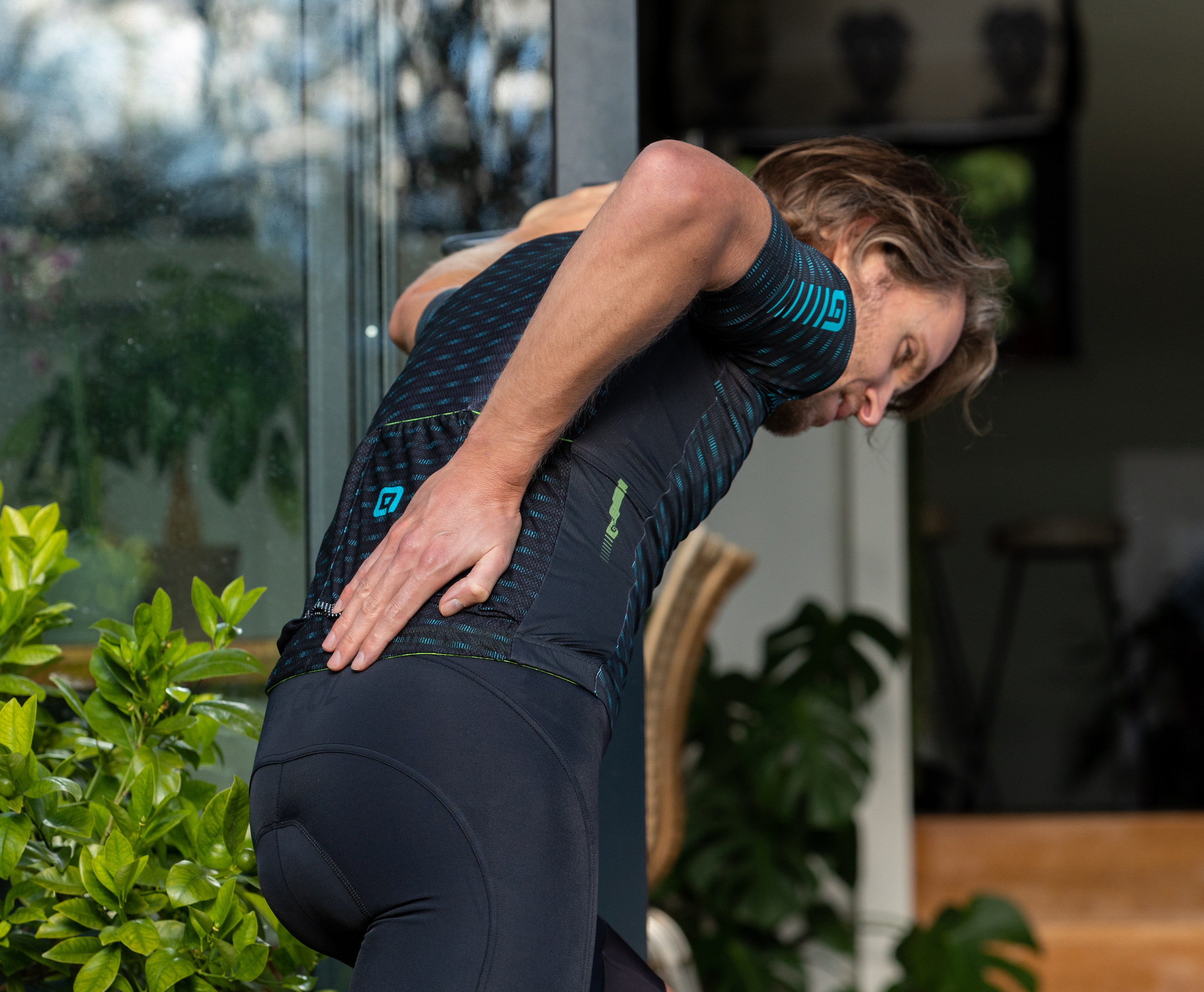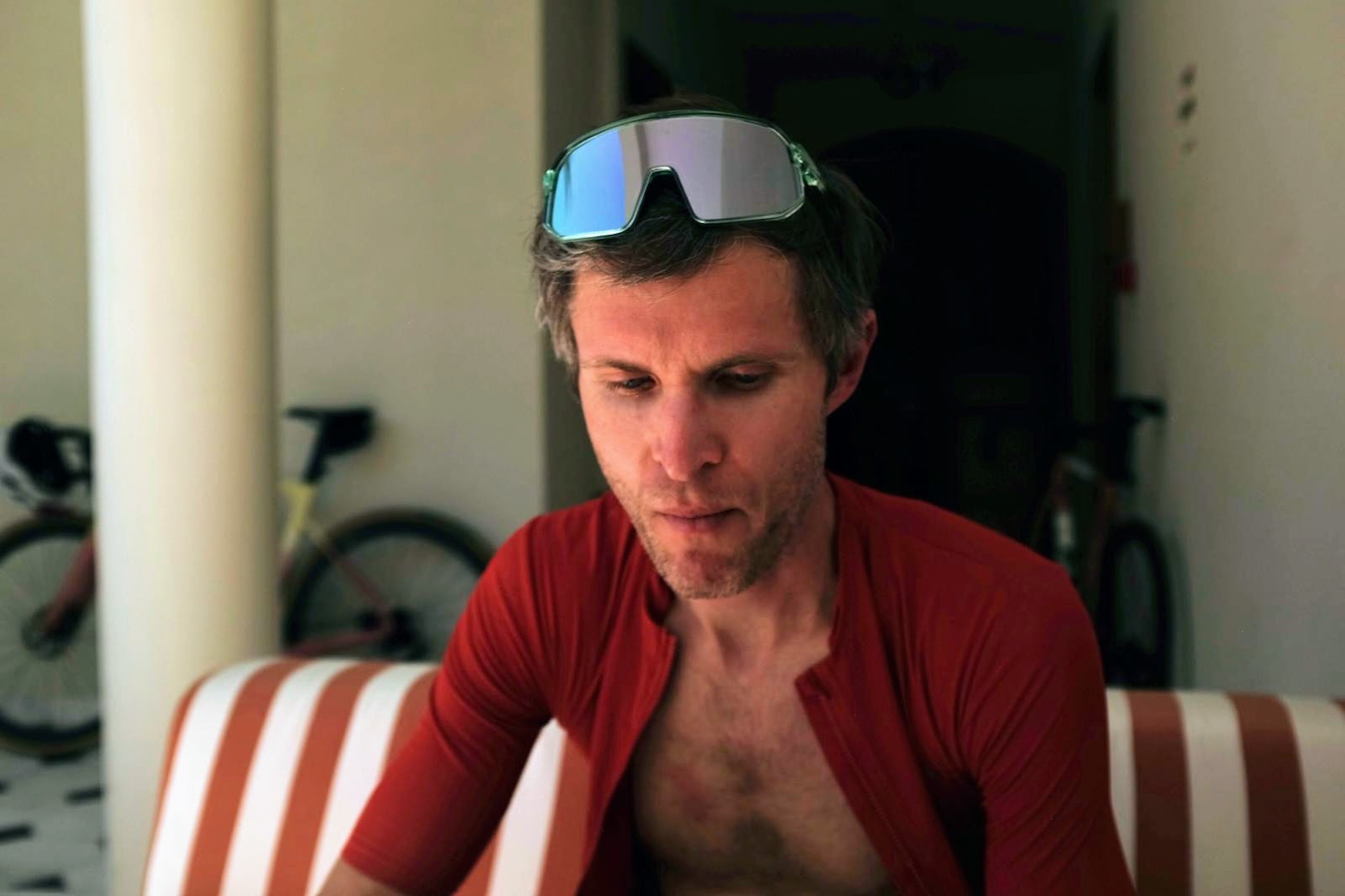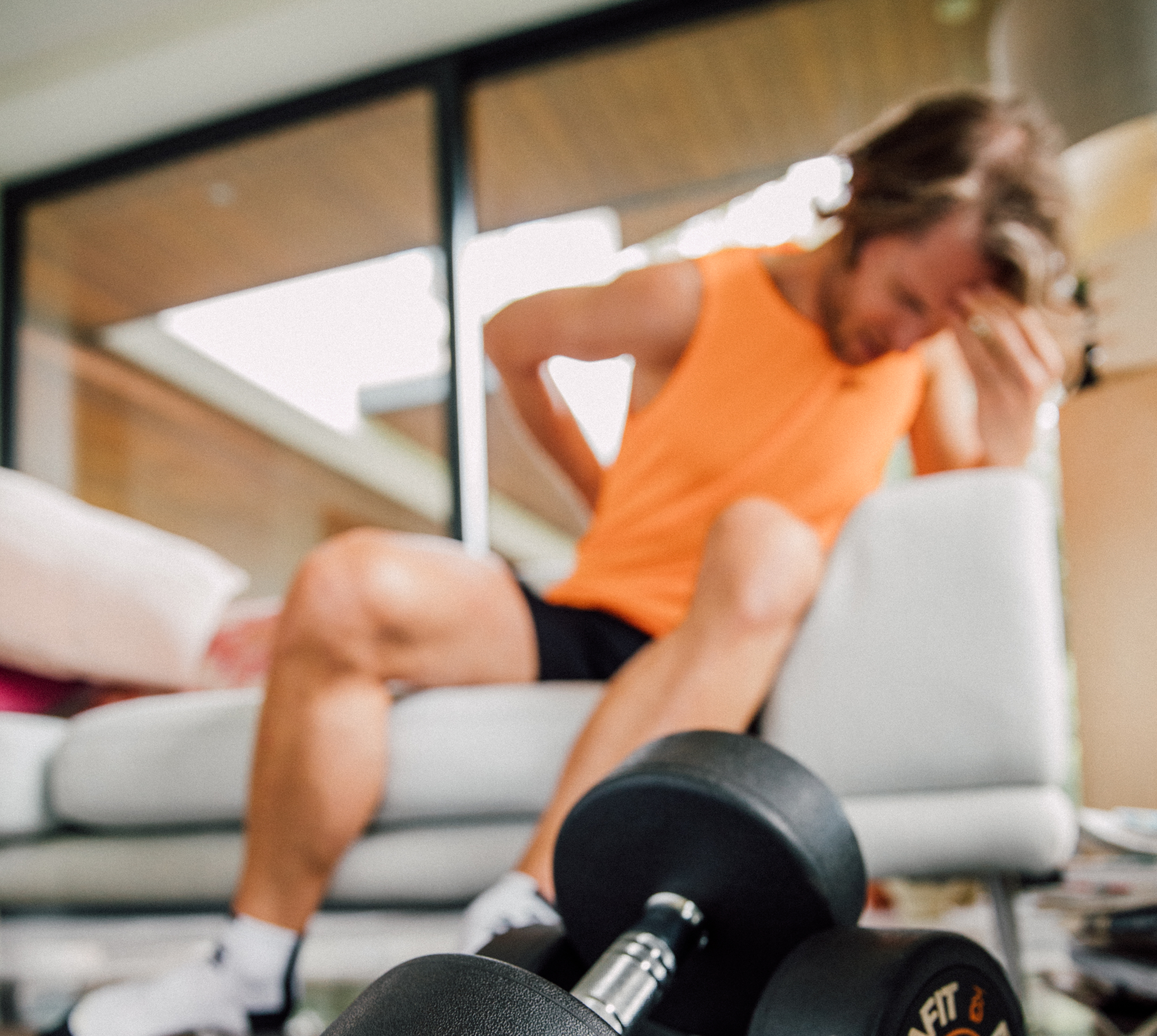The truth about cycling and back pain: Q&A with a myth-busting physio
Finding himself immobilised by lower back pain, CW magazine fitness editor David Bradford goes in urgent search of expert advice to quell his fears and get him back on his bike


It’s an uncomfortable truth that lower back pain is common among cyclists. But are we really more prone to back issues than people who do other sports and activities? And if so, is it caused directly by our position on the bike, being leant over to varying degrees, or other less obvious factors? In other words, how can we separate the truths from the presumptions, the researched facts from the pseudo-science-spun myths? In doing so, maybe at least some of us can avoid falling victim to back pain in the first place.
My interest in this topic piqued very suddenly one Sunday morning a few weeks ago when, having dipped into a squat in my home gym, I began to push up and… Aaargh! A paroxysm of pain shot through my torso with such intensity that instinct took over and hurled me onto the adjacent sofa as the dumbbells hitherto at my shoulders clattered to the floor. For a few hours, I wasn’t sure what to do: my back was completely seized and any significant movement, e.g. getting up, felt not just too painful but literally impossible. I’m in serious trouble here, was all I could think. I called 111 but couldn’t get through, so eventually – having satisfied myself that I had no sinister symptoms such as loss of feeling – I very tentatively hauled myself to my feet. A few agonising steps later, I prostrated myself on my bed and lay motionless, fearing the next spasm.

For the next few days, I could neither stand nor walk unsupported. Getting around meant a snail’s pace shuffle using my office chair like a Zimmer frame. I even needed to be propped up to go for a pee; ‘humiliating’ barely covers it. While I was flat on my back distracting myself on Instagram as I tried to get comfortable, I stumbled upon a series of video posts by the sports physio Adam Meakins entitled ‘My Back Injury’. It turned out Meakins had injured his back, like me, in the gym just a couple of weeks earlier. Not only had he caught the moment on video but had thereafter posted daily updates detailing his rehab and recovery, drawing on his many years of clinical experience and knowledge of the science. For me, the series became a hugely reassuring and informative resource that genuinely helped me a) stop panicking and b) take sensible, evidence-based measures to help my back recover.
Though my mobility remained pitifully compromised for about a week and I doubted I would ever be able to cycle or run again, after three weeks I was pain-free, almost fully recovered and back to my usual activities. Given the initial agony, it was an astoundingly fast recovery. So many of my assumptions and fears about my back pain had proved false – many of them nipped in the bud by Meakins – that I was determined to arrange a call with the man himself, firstly to say thanks, and secondly, to further prise apart the myths and misunderstandings.
David Bradford: Many people assume that cycling causes back pain. Is there any truth in that?
Adam Meakins: An objective way to approach this is by looking at documented injury risk prevalence figures. Cycling is near the bottom of the table, with just three to five injuries per 1,000 hours. Bear in mind, most of those injuries are caused by falling off, suggesting that the riding itself is very low-risk. That said, obviously being in a cycling position means you are bent over with sustained periods of spinal flexion – positions believed to be associated with back pain. But again, this relationship is not well supported. In fact, a 2019 study on high-volume road cyclists showed only beneficial adaptations to discs and psoas muscles, compared to a group of non-cyclists. Of course cyclists do have episodes of back pain, but not at higher rates than in other sports that don’t involve spinal flexion such as running. Think of it like this: back pain is as common as headache, affecting most people from time to time, often for no apparent reason.
SECOND OPINION: Dr Graham Theobald (thebodyrehab.co.uk) On cycling and back pain: Being a bike-fitter as well as a clinician, I do think that as health professionals we could do much better in assessing and advising on cycling position. We don’t think twice about asking runners about their footwear and training load
but when it comes to cyclists with back pain, I hear too often of clinicians not even asking about bike set-up. Again, following some simple principles around position and the demands on the lower back can help considerably.
Get The Leadout Newsletter
The latest race content, interviews, features, reviews and expert buying guides, direct to your inbox!
DB: Like you, I hurt my back in the gym. My first thought was that my poor squatting form was to blame – that I’d caused the injury through carelessness. How likely is that?
AM: When it comes to any pain or injury, associating it with a single factor is reductionist and inaccurate. Someone could bend over to pick something up and be absolutely fine 99 times out of 100, using the same technique every time. Why that one time did it happen? Possibly because of poor technique coupled with progressive deterioration over time, but the truth is we don’t know for sure. There is no proven correlation between exercise technique and injury or pain.
DB: Hang on, are you saying that there is no such thing as poor lifting form?
AM: I’m on the fence on this one. I think we have to recognise that each of us is an individual; we’re human beings, each built differently, with different experiences, levels of ability, age, etc. All of these differences affect how somebody moves and completes tasks, as does their environment. Are there better ways to move and perform certain tasks? Yes, there are more efficient ways, for sure. For example, maintaining stiffness and rigidity means you’re going to be more efficient in picking up something heavy. When it comes to reducing injury risk, there is greater uncertainty: we just don’t have enough evidence to say that moving in one particular way is more or less likely to cause injury than moving in another way.
DB: Another possible mistake I made was not stretching or warming up beforehand. Would that have prevented my injury?
AM: It’s impossible to say. Unfortunately, many runners and cyclists believe that five to 10 minutes doing static stretches before they start exercising will decrease their risk of injury, but there is absolutely no evidence for this. The only exception is sports that require extreme ranges of movement. For cyclists, static stretching is not essential. Of course, if you enjoy doing it, that’s fine, carry on.
DB: My next self-critical suspicion was that sitting at my desk all day doing my job had weakened my back. Is that possible?
AM: I have to admit, for years I was very much a believer in the theory that long periods of sitting were associated with more episodes of back pain. But it’s just not backed up by epidemiological studies. Although sitting was demonised as “the new smoking”, the recent research has failed to find a strong association. The same cannot be said for sedentariness. You can sit for long periods of time as long as you’re frequently physically active. One study found that, for each eight hours of sitting, the risks can be fully mitigated by one hour of exercise.
DB: When I hurt my back, the pain was so intense that I leapt to the conclusion that I’d done serious damage. Is the assumption that pain equals damage itself a myth?
AM: Yes, it’s a very big prevailing myth, not just in the general population but also in healthcare. The fact is, there is no correlation between severity level, intensity or even duration of pain and structural pathology. That’s not to say they never match up, of course, but you can have severe levels of pain with minimal or no structural pathology. Conversely, we sometimes see individuals with no pain or symptoms who have really significant structural changes; they’re blissfully unaware. Back pain can be like a paper cut in the sense that insignificant damage can hurt like hell!
DB: Yet if I had a pound for everyone who told me I must have slipped a disc…
AM: This drives me crazy. I hear it everywhere, from GP’s surgeries to ‘Good Morning Britain’: so-called slipped discs and discs being likened to a jam doughnut in structure. Discs don’t slip! The doughnut analogy gives the impression that discs are soft, squishy and easily deformed, but if you actually see an actual human disc, it’s bloody tough and it’s firmly attached to the vertebrae. The thick rubbery fibre cartilage rings are more like tyres than doughnuts, and the substance inside them is gooey and thick, more like chewing gum than jam.
DB: But what if a disc is damaged? Most of us assume that’s very bad news and probably won’t heal by itself.
AM: That’s another myth. In cases of disc herniation, disc prolapse and disc extrusion, the vast majority spontaneously heal and resolve, given enough time. Similar to breaking a bone, the disc will usually repair and remodel to full functionality.
DB: Partly because I was reassured by your advice on Instagram, I chose not to seek medical help in those first few days. Is it a myth that people with acute back pain always need to see a doctor or physio?
AB: For people whose pain is unexplained and is worrying or concerning them, I would always suggest they go and see a healthcare professional, if only to put their mind at rest. The statistics on this tell us that only 1% of all back pain is related to something serious – but it’s still worth getting yourself ruled out of that 1%. The problem comes – and I think this is mainly the fault of certain healthcare professions – when people are overdiagnosed and overtreated for their back pain: given 101 different possible causes and treatments. This can create negative associations in the person’s mind that worsens or prolongs their back pain. It should be honestly explained that the average duration of a severe acute episode of back pain is six to eight weeks, and that usually all that’s needed is time, monitoring and simple strategies to manage the pain while it naturally heals.
DB: Many people assume they need hands-on manual therapy, manipulation or massage from a physio or osteopath. Are they right?
AM: It is not necessary or essential, but it can be nice if you have the time, money and inclination. I have found over the years as a physio treating people with acute episodes of back pain that it’s very hit-and-miss; it doesn’t help everybody uniformly. Generally I don’t think manual therapy is any more effective than other simple measures such as going for a gentle walk, taking paracetamol, having a hot bath or applying a hot water bottle.
When to seek emergency help
Acute lower back pain usually feels worse than it actually is, in terms of structural damage, but what are the signs of serious problems?
“The key red flags are severe neurological deficits, bilateral leg pains with bilateral leg weaknesses,” says Meakins. “If you’re finding it difficult to stand up because you feel like your legs are not able to support your weight, or you have loss of sensation, particularly in the genital – or saddle – area, you need urgent assessment.
“These serious problems are very rare, but you may have a spinal fracture – more common in people with osteoporosis. Spinal infections may cause low back pain, so if you have a fever or night sweats, that is another red flag. Spinal tumours, again very rare, can cause severe back pain that tends not to improve over time and may be accompanied by weight loss. Deterioration in pain for longer than a week calls for urgent referral.”
SECOND OPINION: Dr Graham Theobald
On treatment vs no treatment: While Adam Meakins is absolutely correct that early, simple mobility can help as much as treatment – supported by strong evidence – my clinical experience is that people more often than not find the benefit of a good health professional examining and reassuring them allows them to progress with confidence. This, alongside some simple treatment, can work wonders. This need not cost a fortune – simple advice and modest treatment gets people on the right road.
DB: What about the more high-tech, weird and wonderful treatment methods such as acupuncture, IDD and traction?
AM: There is very little evidence to show any of these work better than placebo treatments. At best, they can reduce symptoms a little for a short time, at worst they can lead people into wasting a lot of time and money.
DB: Am I right in thinking the old adage that rest is best for back pain no longer applies?
AM: Absolutely. Early movement is better than waiting, and little movement is better than no movement at all. Walking is balm for the back; OK, so it’s not sexy and doesn’t require degree-level training, but a simple little stroll – little and often – can do wonders. Then you can add simple floor mobility exercises: knee rolls, cat-cow, etc.
DB: Finally, when is it safe to return to cycling? Do you need to wait until you’re completely pain-free?
AM: No, it could actually be riskier in the longer term to put it off for ages. If you take a long break, you may lose confidence as well as the mobility that’s usually maintained by riding. From physiological and psychological perspectives, returning to your normal activities is vital. You don’t have to wait until you’re completely pain-free before getting back on your bike. Find a balance: let the pain subside, then carefully and gradually build back up.
Adam Meakins (thesports.physio) is a physiotherapist and S&C specialist working in the NHS and private practice in Hertfordshire. He can be found on Twitter, Facebook and Instagram at @adammeakins ‘The Sports Physio’.

Thank you for reading 20 articles this month* Join now for unlimited access
Enjoy your first month for just £1 / $1 / €1
*Read 5 free articles per month without a subscription

Join now for unlimited access
Try first month for just £1 / $1 / €1

David Bradford is features editor of Cycling Weekly (print edition). He has been writing and editing professionally for more than 15 years, and has published work in national newspapers and magazines including the Independent, the Guardian, the Times, the Irish Times, Vice.com and Runner’s World. Alongside his love of cycling, David is a long-distance runner with a marathon PB of two hours 28 minutes. Having been diagnosed with retinitis pigmentosa (RP) in 2006, he also writes about sight loss and hosts the podcast Ways of Not Seeing.
-
 'This is the marriage venue, no?': how one rider ran the whole gamut of hallucinations in a single race
'This is the marriage venue, no?': how one rider ran the whole gamut of hallucinations in a single raceKabir Rachure's first RAAM was a crazy experience in more ways than one, he tells Cycling Weekly's Going Long podcast
By James Shrubsall
-
 Full Tour of Britain Women route announced, taking place from North Yorkshire to Glasgow
Full Tour of Britain Women route announced, taking place from North Yorkshire to GlasgowBritish Cycling's Women's WorldTour four-stage race will take place in northern England and Scotland
By Tom Thewlis